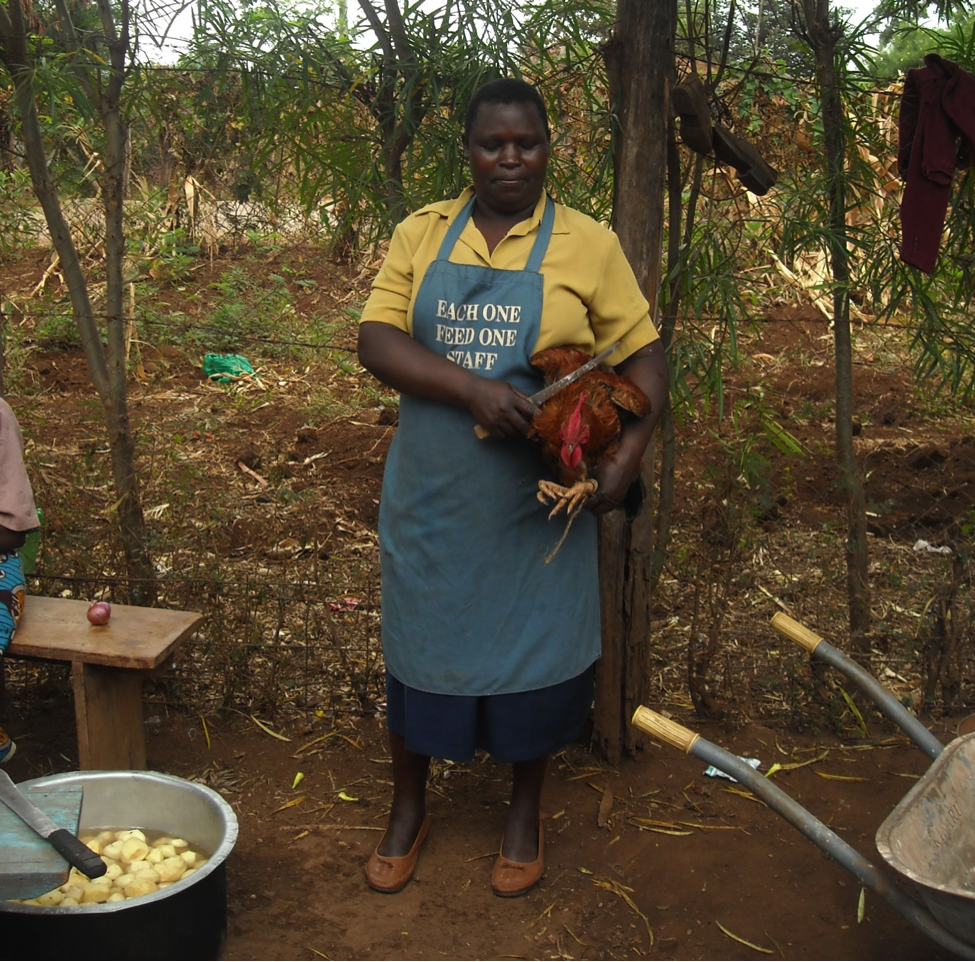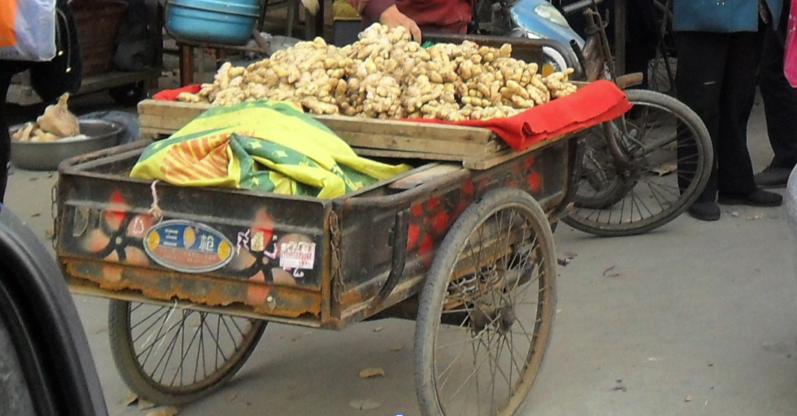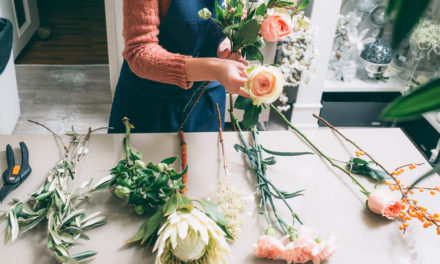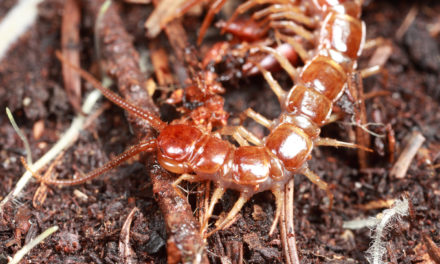Do you know where your garlic is grown? Sixty percent of our garlic is imported from China. In this photo, I am walking in an open market. The woman is selling ginger root while the men in the background are carving portions of meat off the carcasses. You go by color there to determine the age of the meat, red and brown is better than green with flies.
With the China crisis in the garlic market, garlic grown locally is advantageous for healthy home cooking. One thing I learned while spending time in China is how differently their worldview is from ours. In the rural areas, where they endured the “Great Death” as they called it where I was staying, the people had been starved to death by the communists, to the extent that there were no birds or wildlife as they had been scavenged as food. They ate every egg in every nest! This mindset means they want to survive and will often use whatever means available to produce the most abundant crops.
One technique that is a widespread practice in China is using human waste and the waste of dogs for fertilizer. If this was processed using modern waste treatment facilities, it might not cause infiltration of bacteria, but often there are no such plants functioning there. They also use many pesticides and herbicides that are banned in other countries. There are many frightening articles on the internet written concerning the farming practices used in many third world countries where we are now importing so much more of our food. Did you know that some of the chickens on your dinner table come from China?
The Avian Flu that struck the remote providences of China several years ago was spread by airborne contact from sick chicks to humans. In that same market in the photo from China, they were also butchering chickens for sale. It’s the best way to ensure fresh meat, but it can be messy and unsanitary causing a virus to spread from poultry to humans rapidly. They were forced to kill hundreds of thousands of chickens to stop the epidemic.
I watched many cooks like this sweet lady in Kenya who was getting ready to dress out the rooster for dinner. There was no soap until I brought some for the workers to wash their hands in between cleaning the bird and cutting the rest of the potatoes. It is a fact of life in many countries.

What does this have to do with shopping at Buchheit? Homesteading and living the simpler life is, in part, a life with freedom. I am free of worry about what is in most of my food since I grow it myself or purchase products from locals who I know care as much as I do about whole foods.
All that starts with Buchheit. I have sat with Tim Buchheit in his truck as he took me on a tour of his organic pastures that took him years to develop. This visionary understands the importance of being a proper steward of the land for the coming generations. I am not a pushover. I should be from Missouri, the “Show Me” state, because during that first corporate interview I wasn’t sure if this company was serious about homesteading or if they were just on the latest marketing bandwagon. Talking with Tim and the staff convinced me that he and his company were serious about helping their customers experience the simpler life and that their commitment to providing the tools to make homesteading as easy as possible was sincere. In this area, I am confident that the product in their stores will help me grow the best farm-to-table meals for my loved ones.
Be blessed! Anne May






